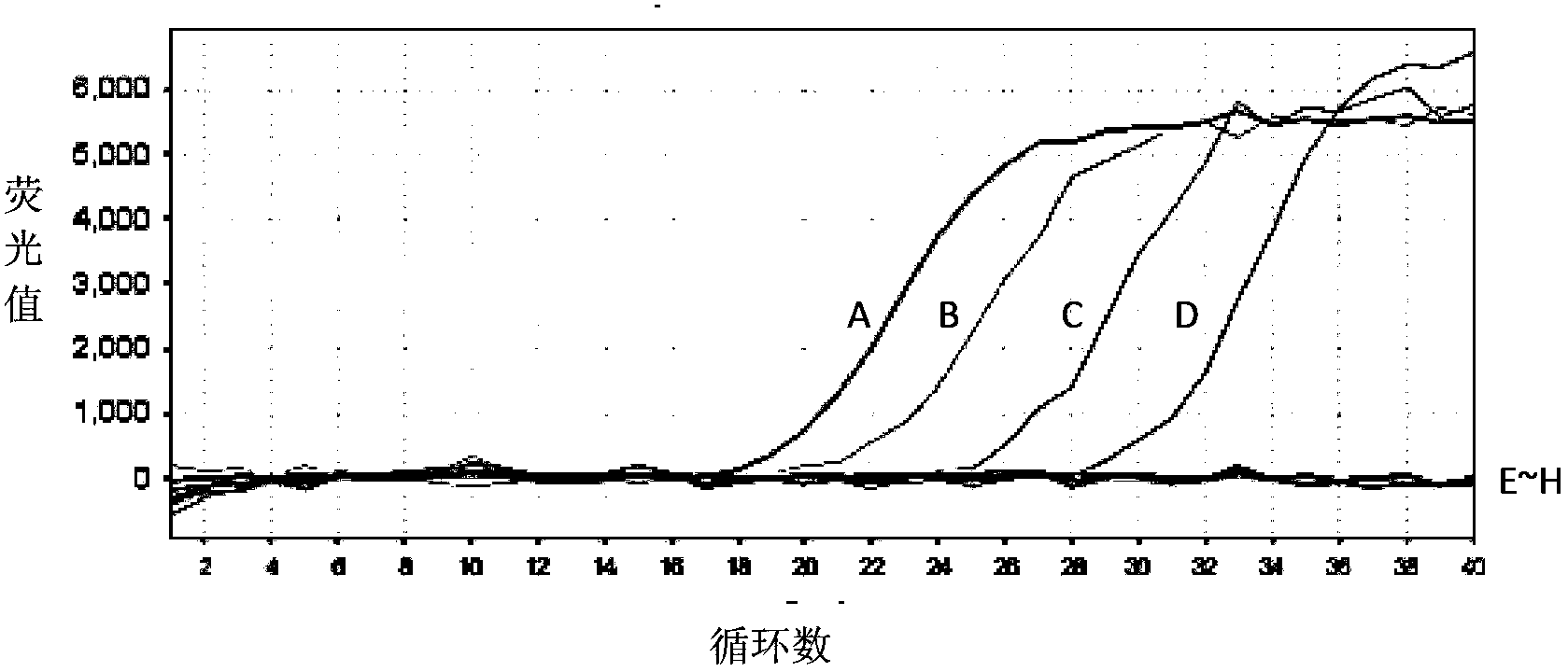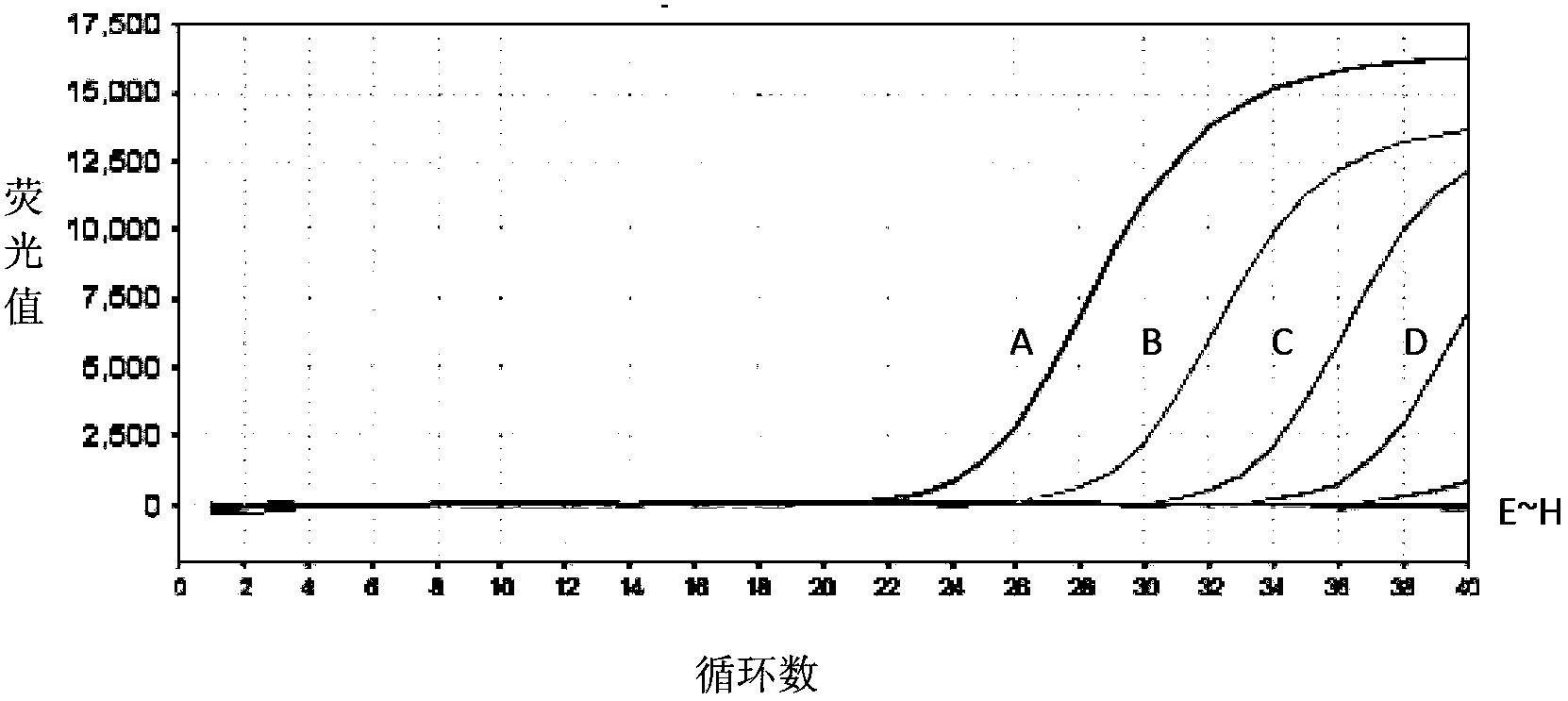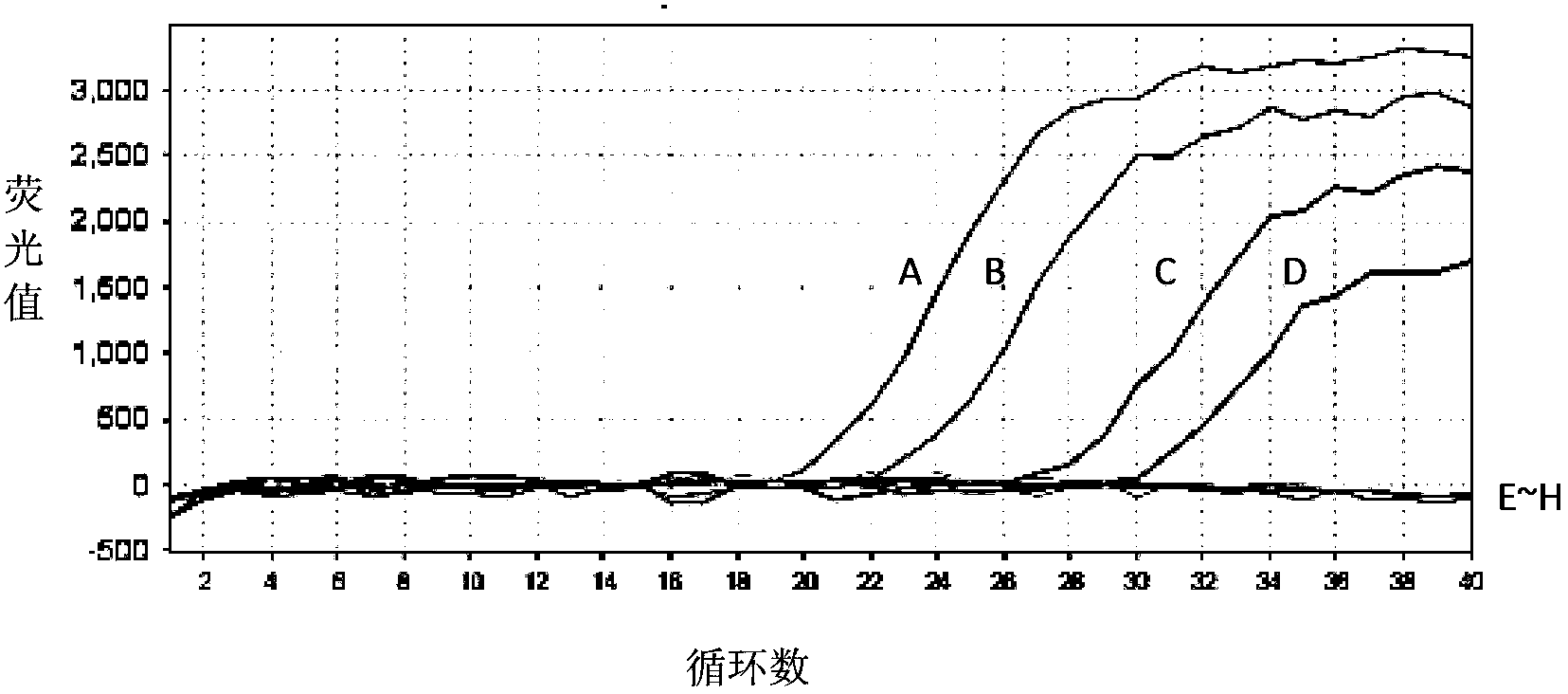Fluorescence quantitative PCR kit used for detecting PRV, and application thereof
A detection kit and fluorescence quantitative technology, applied in the direction of fluorescence/phosphorescence, microbial measurement/inspection, biochemical equipment and methods, etc., can solve the inaccuracy, specificity, sensitivity and reproducibility of real-time quantitative PCR detection technology Meet the problems that have not yet been developed, and achieve the effect of fast detection, high accuracy, and improved signal-to-noise ratio
- Summary
- Abstract
- Description
- Claims
- Application Information
AI Technical Summary
Problems solved by technology
Method used
Image
Examples
Embodiment 1
[0040] Example 1 Screening of Primers and Probes for Fluorescent Quantitative PCR Detection of Porcine Pseudorabies Virus (PRV)
[0041] 1. Design of primers and probes
[0042] Referring to the gene sequence of PRV in my country published in Genebank, combined with the design characteristics of fluorescent PCR primers and probes, Primer Express and DNAStar software were used to design primers and probes for PRV conserved region fragments, and the designed multiple pairs of primers and probes (see Table 1) Screening tests were carried out, and the literature (Zhao Li, Cui Baoan, Chen Hongying, etc., the establishment and preliminary application of TaqMan real-time fluorescent quantitative PCR method for detecting porcine pseudorabies virus [J]. Chinese Journal of Preventive Veterinary Medicine, 2009, 31 (2) : 137-140.) reported in the detection of PRV primers and probe sequences (that is, the sixth group in Table 1) as a control for comparative research, from which the primers...
Embodiment 2
[0049] Example 2 Composition and optimization of fluorescent quantitative PCR detection kit for porcine pseudorabies virus
[0050] Optimization of the concentration of primers and probes: When other components in the reaction system remain unchanged, the concentrations of the specific primer pairs are respectively selected as 0.1 μmol / L, 0.2 μmol / L, 0.3 μmol / L, 0.4 μmol / L, and 0.5 μmol / L, and the concentration of specific probes was respectively selected as 0.05 μmol / L, 0.1 μmol / L, 0.2 μmol / L, 0.3 μmol / L, and 0.4 μmol / L for the PCR pre-experiment, and the preferred specific primer pair was 0.2 μmol / L L, the specific probe concentration is 0.1 μmol / L.
[0051] Optimization of the concentration of the dNTP mixture: When other components in the reaction system remain unchanged, the concentrations of the dNTP mixture are respectively selected as 0.1mmol / L, 0.2mmol / L, 0.3mmol / L, 0.4mmol / L, 0.5mmol / L, 0.6mmol / L, for PCR, the preferred dNTP mixture concentration is 0.5mmol / L.
...
Embodiment 3
[0061] Example 3 Application of Fluorescent Quantitative PCR Rapid Detection Kit for Porcine Pseudorabies Virus
[0062] 1 Extraction of viral DNA
[0063] 1.1 Extraction of viral DNA in the sample to be tested (tissue type): Take 50-100 mg of the sample to be tested, put it in a sterile 1.5ml centrifuge tube, and add it according to the ratio of tissue sample: PBS weight volume ratio of 1:5 PBS solution, fully homogenized with a homogenizer, centrifuged at 4000rpm for 10min, took 200μL of the supernatant, and put it into a new sterile 1.5mL centrifuge tube free of DNase contamination, numbered for future use.
[0064] Take a 1.5mL centrifuge tube that is equivalent to the number of samples to be tested without DNase contamination and mark it. Add 600 μL of DNA extraction solution, and then add 200 μL of the corresponding supernatant of the sample to be tested and 200 μL of the negative quality control product, shake for 30 sec and mix, then place at room temperature for 10...
PUM
 Login to View More
Login to View More Abstract
Description
Claims
Application Information
 Login to View More
Login to View More - R&D
- Intellectual Property
- Life Sciences
- Materials
- Tech Scout
- Unparalleled Data Quality
- Higher Quality Content
- 60% Fewer Hallucinations
Browse by: Latest US Patents, China's latest patents, Technical Efficacy Thesaurus, Application Domain, Technology Topic, Popular Technical Reports.
© 2025 PatSnap. All rights reserved.Legal|Privacy policy|Modern Slavery Act Transparency Statement|Sitemap|About US| Contact US: help@patsnap.com



